

Owning a home is a big part of the American dream for many people. But buying a house is becoming harder, and more than three-quarters of Americans now feel that renting is cheaper, according to a Freddie Mac survey. The homeownership rate nationwide has declined consistently since peaking at 69.1% in 2005 and is now 64.2%.
There are still, however, a number of places where a large share of the population is still willing and able to buy a house. In 20 U.S. cities, over 80% of occupied homes are owned by their residents. These cities, often in the Midwest, tend to have relatively high median household incomes, especially for their state. These places are often within commuting distance of major cities like Chicago or Dallas that tend to have an abundance of high-paying jobs.
24/7 Wall St. reviewed data from the U.S. Census Bureau’s American Community Survey on the percentage of occupied housing units that are occupied by their owners to determine the cities where most occupied homes are owned by an occupant.
Buying a home is the largest and most important financial decision most Americans will likely ever make. Most homeowners take on over $100,000 in mortgage debt, and many take on significantly more. These are the states with the most mortgage debt.
Unsurprisingly, areas with high homeownership rates tend to be wealthy. In nine of the 20 cities where the most people own their homes, the median annual household income is over $100,000. And in each city on the list the median household income is greater than $70,000, well above the U.S. median of $57,652. These are the richest cities in America.
Click here to see the cities where the most people own their homes
Click here to read our methodology
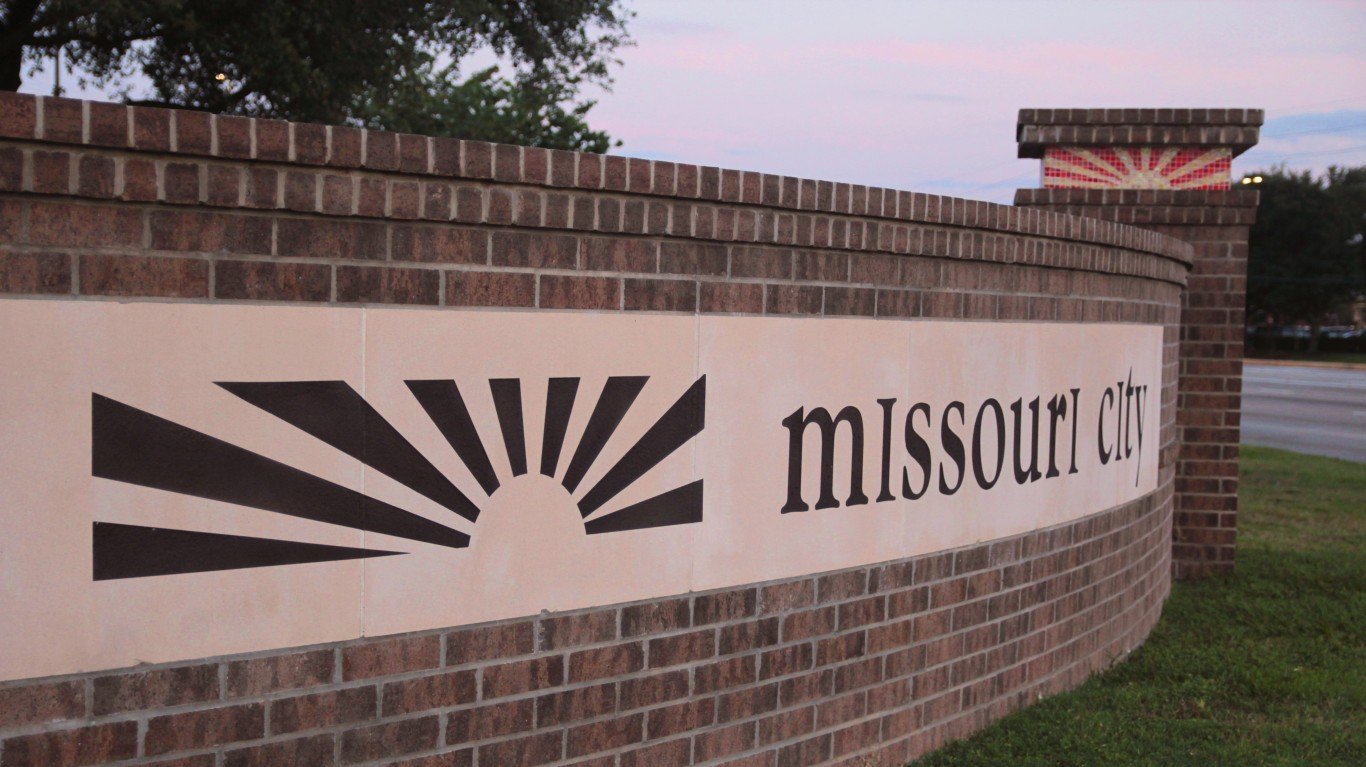
20. Missouri City, Texas
> Homeownership rate: 80.6%
> Median owner-occupied home value: $171,000
> Median household income: $88,896
> Median rooms per housing unit: 6.9 rooms
More than 80% of Missouri City, Texas, homes are owned by their residents, as compared to just 62.0% of Texan homes. Most Missouri City households have an annual income of over $88,000 — well above the U.S. median household income of $57,562. Yet the city’s median home value of $171,000 is lower than the U.S. median home value of $193,500.
[in-text-ad]
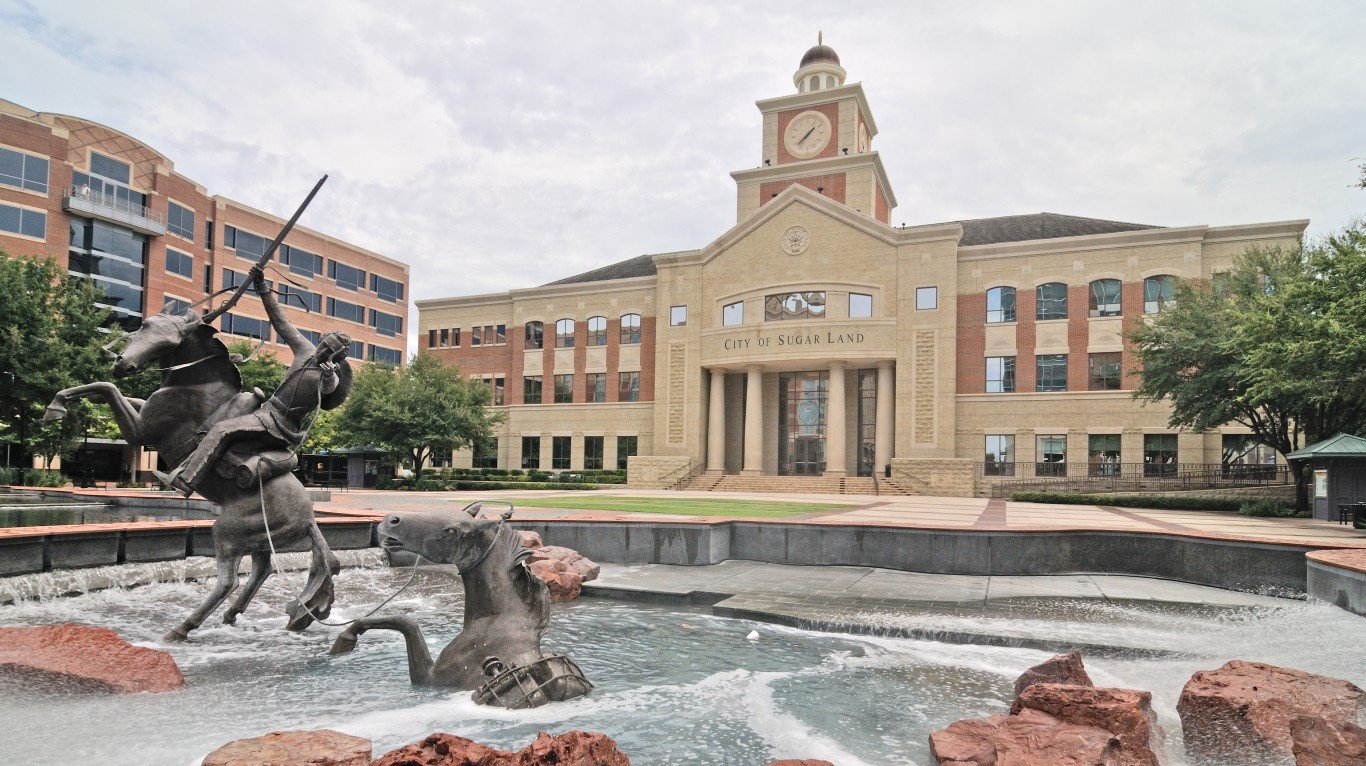
19. Sugar Land, Texas
> Homeownership rate: 80.7%
> Median owner-occupied home value: $292,700
> Median household income: $108,994
> Median rooms per housing unit: 7.2 rooms
Sugar Land, Texas, like Missouri City, is a Houston-area city in which more than 80% of occupied homes are owned by their occupants. Area residents are likely better able to pay off their mortgages as indicators point to favorable economic conditions in the area. The annual unemployment rate in Sugar Land of 3.0% is below the national rate, and the median annual household income of $109,000 is nearly double the national median.

18. Fishers, Indiana
> Homeownership rate: 80.8%
> Median owner-occupied home value: $240,100
> Median household income: $101,469
> Median rooms per housing unit: 7.5 rooms
Half the houses in Fishers, Indiana, are worth less than $240,000. A quarter of homes, however, have a value between $300,000 and $500,000, and 8.3% are worth $500,000 or more. Fishers residents tend to have much higher incomes than across Indiana. The city’s $101,469 median annual household income is nearly double the state’s median of $52,182.

17. Bolingbrook, Illinois
> Homeownership rate: 80.9%
> Median owner-occupied home value: $209,200
> Median household income: $83,419
> Median rooms per housing unit: 6.8 rooms
Bolingbrook, Illinois, is a suburb southwest of Chicago. Its residents have access to higher-paying jobs in the major city. Access to high-paying jobs in Chicago help explain Bolingbrook’s median household income of over $83,000 annually, as compared to the state median income of just over $61,000. These higher incomes make it easier to afford homes, which may explain why nearly 81% of Bolingbrook occupied homes are owned by their residents, as compared to Illinois’ home ownership rate of 66.1%.
[in-text-ad-2]
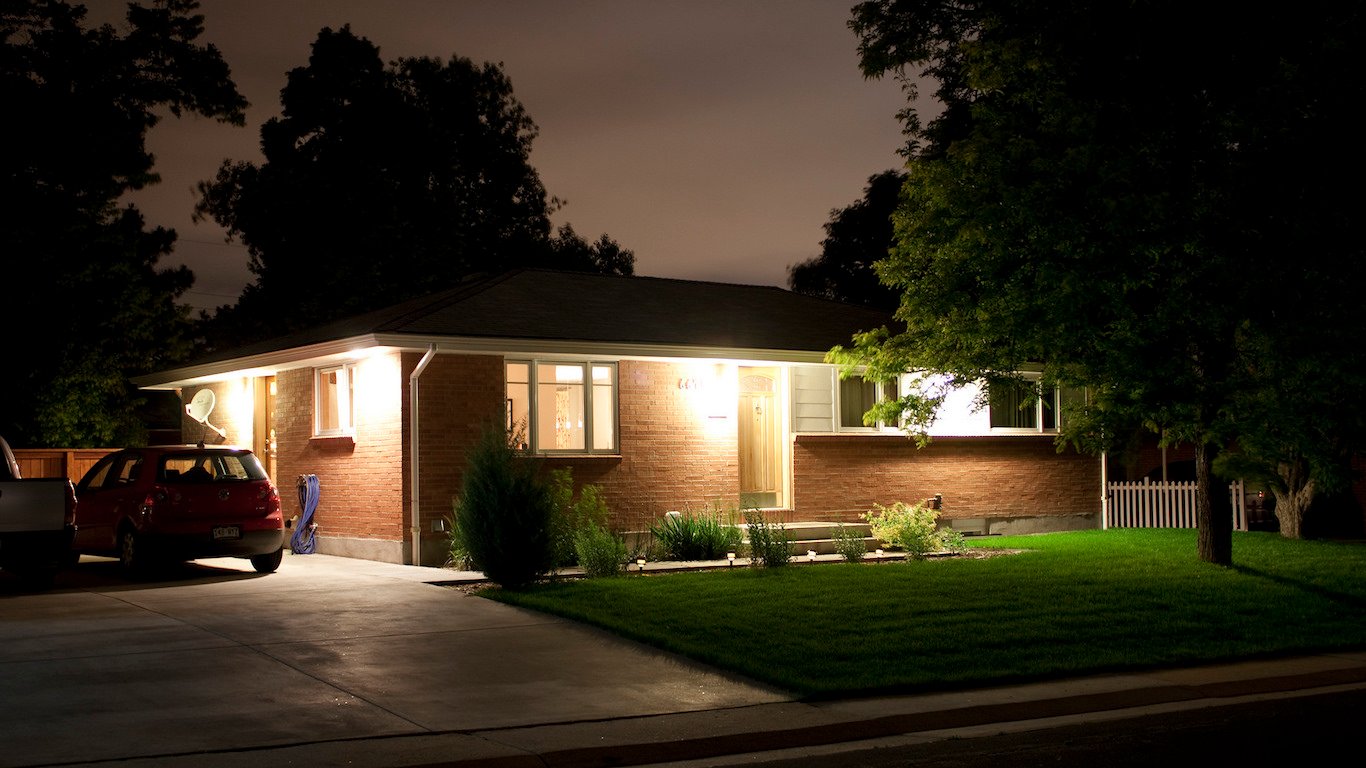
16. Centennial, Colorado
> Homeownership rate: 81.9%
> Median owner-occupied home value: $367,000
> Median household income: $100,770
> Median rooms per housing unit: 7.6 rooms
Centennial, Colorado, homes are among the largest in the country, with a median of 7.6 rooms per home. The median U.S. home has 5.5 rooms. Residents of Centennial are likely able to buy homes because financial strain is relatively uncommon. Just 4.3% of residents live in poverty, compared to 14.6% nationwide, and the median annual household income is over $100,000.
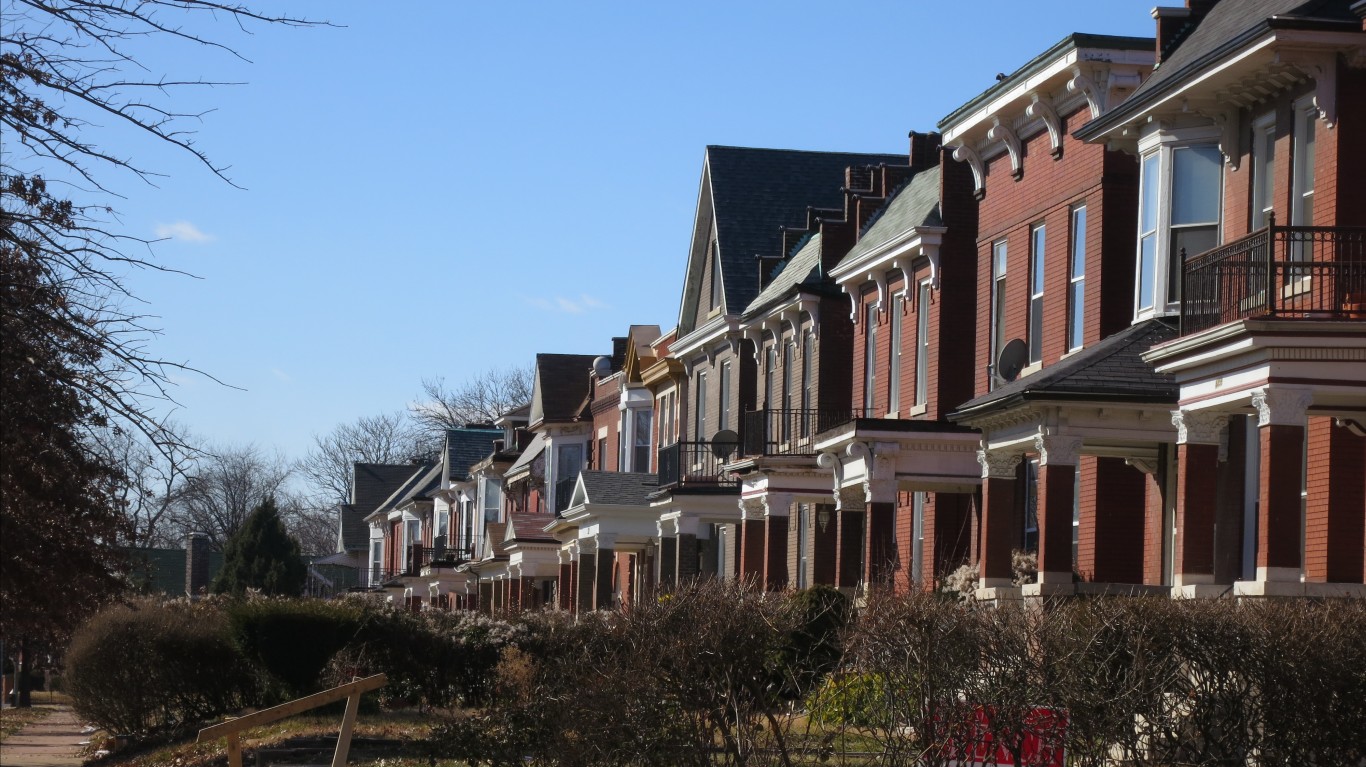
15. O’Fallon, Missouri
> Homeownership rate: 82.3%
> Median owner-occupied home value: $207,700
> Median household income: $84,580
> Median rooms per housing unit: 6.3 rooms
Residents of O’Fallon tend to be much better off financially than those in Missouri as a whole, allowing them the financial flexibility to purchase their own homes instead of renting. The St. Louis-area city’s median annual household income of $84,580 is $33,000 higher than the state’s median.
[in-text-ad]
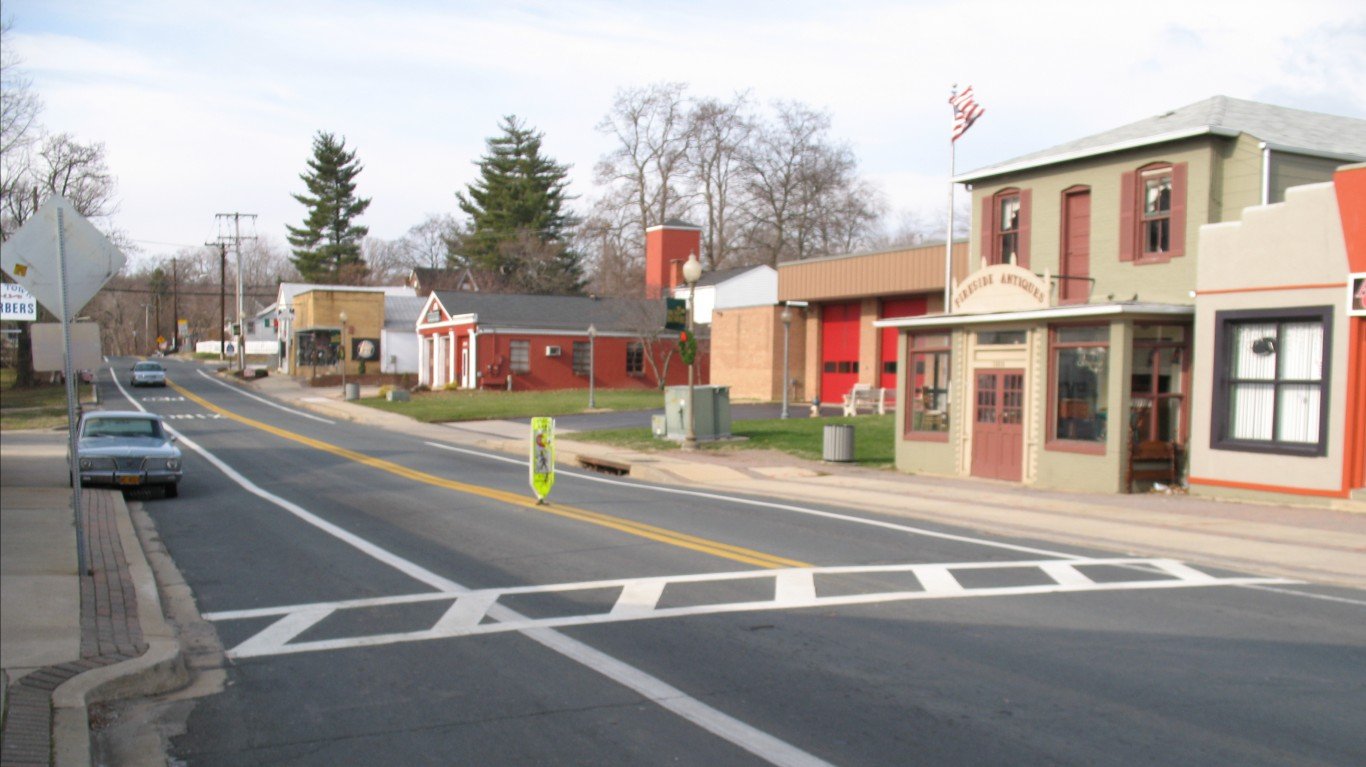
14. Bowie, Maryland
> Homeownership rate: 82.6%
> Median owner-occupied home value: $315,900
> Median household income: $108,637
> Median rooms per housing unit: 7.3 rooms
Bowie, Maryland’s proximity to Washington, D.C. provides its residents access to many high-paying government and contracting positions. The city’s annual median household income is $108,637, more than $50,000 higher than the U.S. median. This financial flexibility allows residents to make large purchases, like a home.
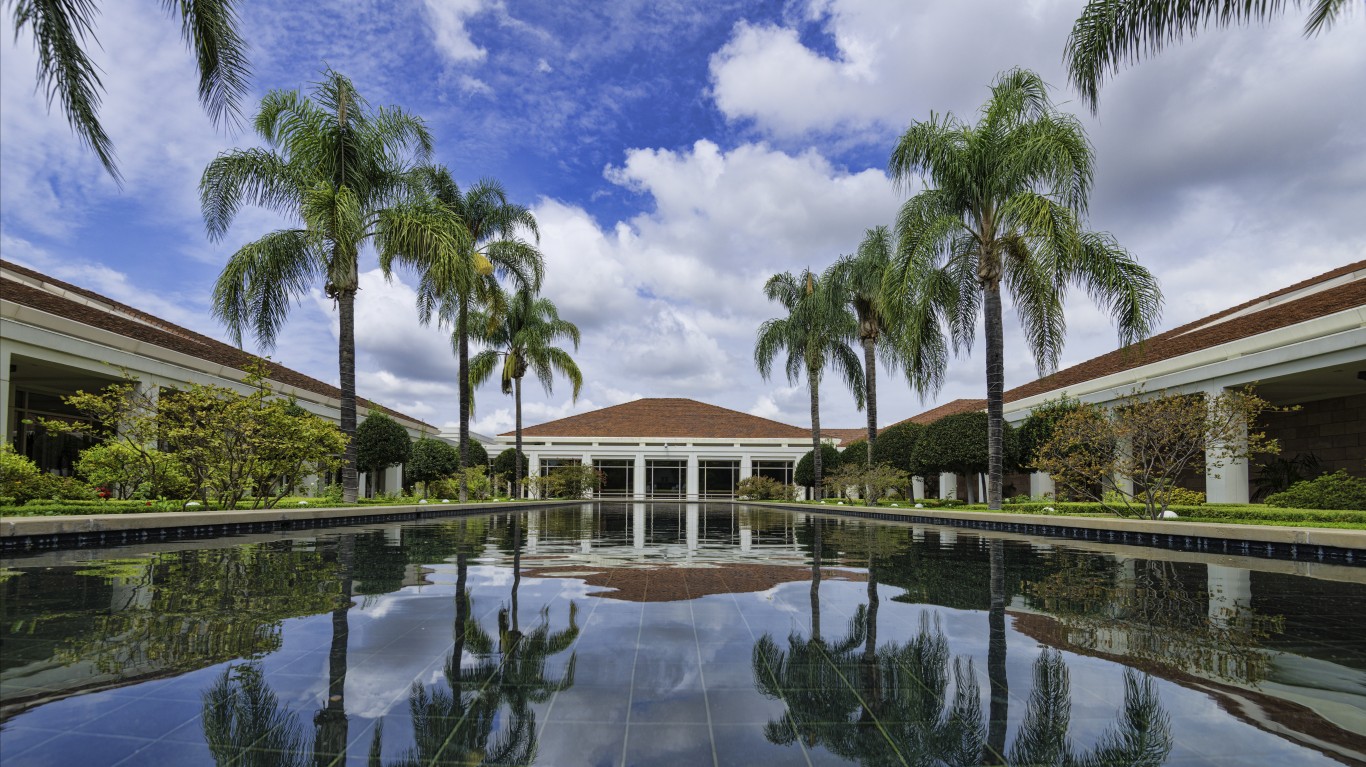
13. Yorba Linda, California
> Homeownership rate: 82.6%
> Median owner-occupied home value: $792,700
> Median household income: $123,962
> Median rooms per housing unit: 6.8 rooms
The median home price in Yorba Linda, California, is nearly $800,000 — more than four times the median nationwide. Despite these high prices, homeownership is very high in Yorba Linda — 82.6% of homes in the city are occupied by their owner. Homeownership rates are likely boosted by the area’s relatively high median household income of $123,962, more than double the U.S. median.
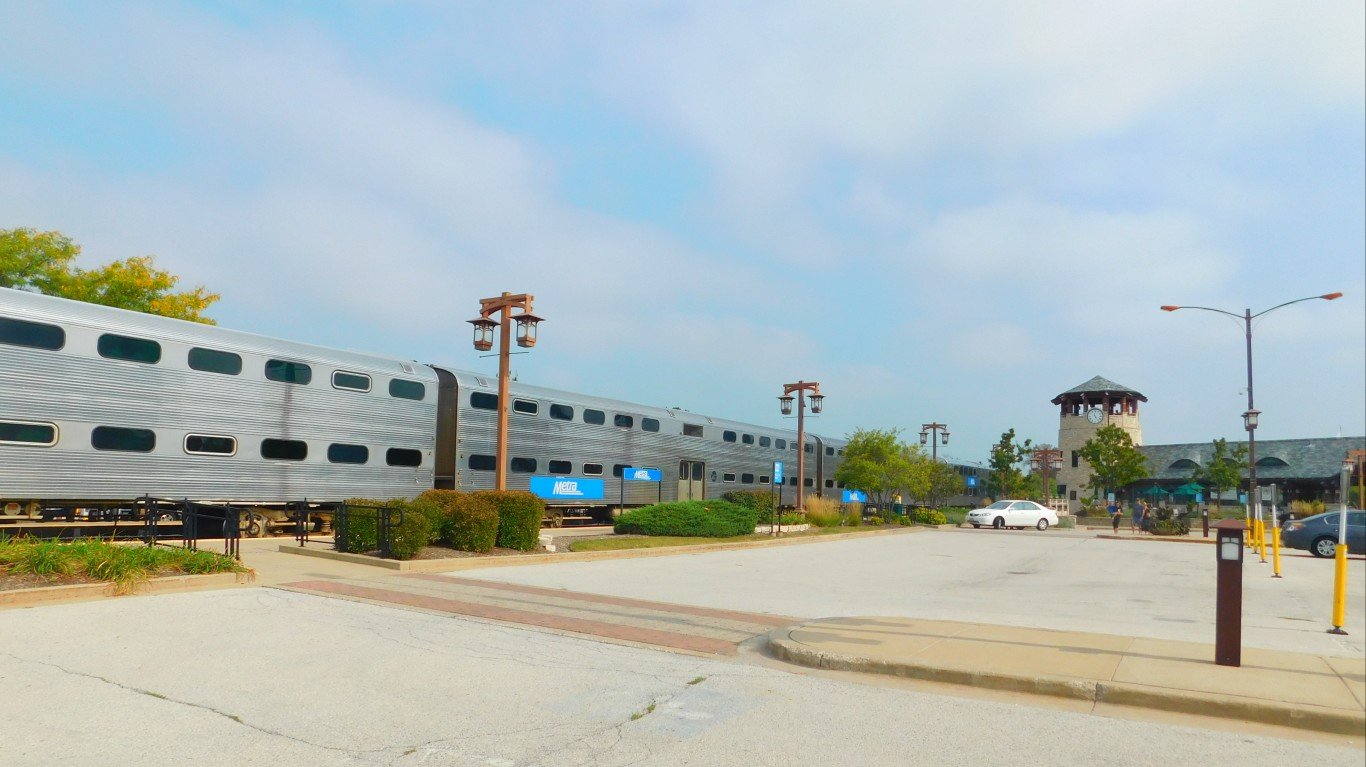
12. Tinley Park, Illinois
> Homeownership rate: 83.3%
> Median owner-occupied home value: $223,100
> Median household income: $76,061
> Median rooms per housing unit: 6.1 rooms
Tinley Park is one of three Illinois cities in which more than 80% of occupied homes are lived in by their owner. Each of these cities is relatively close to Chicago and the lucrative jobs available there. At $223,100, the median home in Tinley Park is more expensive than the median home in Illinois, which is $179,700.
[in-text-ad-2]
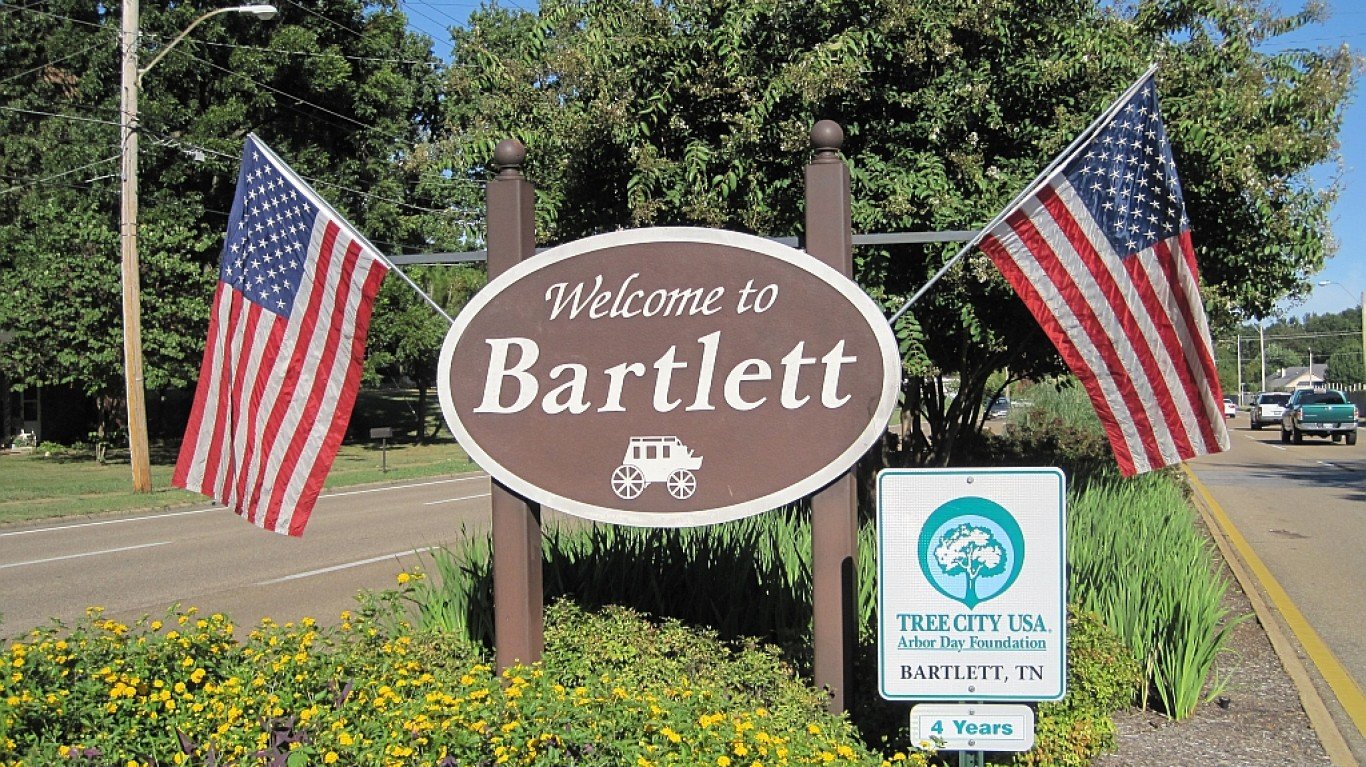
11. Bartlett, Tennessee
> Homeownership rate: 84.7%
> Median owner-occupied home value: $172,300
> Median household income: $82,213
> Median rooms per housing unit: 7.1 rooms
Nearly 85% of Bartlett, Tennessee, homes are owned by their residents, one of the highest homeownership rates in the country. In Bartlett, financial struggles are much less common than in Tennessee overall. The poverty rate of 6.7% is a full 10 percentage points lower than the state’s, and the median annual household income of $82,213 is well above Tennessee’s median of $48,700.
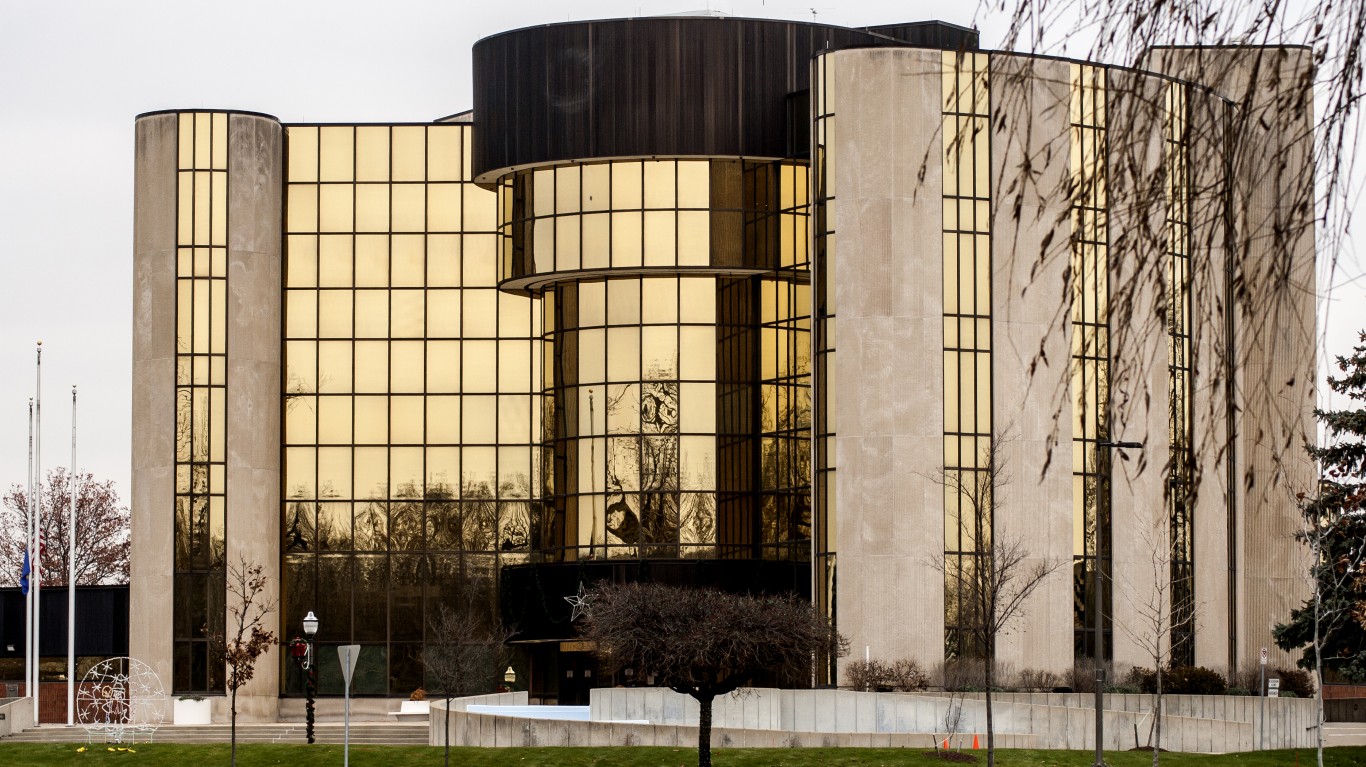
10. Livonia, Michigan
> Homeownership rate: 84.8%
> Median owner-occupied home value: $170,500
> Median household income: $74,882
> Median rooms per housing unit: 6.2 rooms
Nearly 85% of occupied homes in Livonia, Michigan, are owned by their residents, one of the highest homeownership rates in the country. Unlike the other cities on this list, very few of the homes in Livonia were built in 2000 or later, at just 4.0%. A very high share of Livonia’s homes, 31.6%, were built in the 1950s.
[in-text-ad]

9. Maple Grove, Minnesota
> Homeownership rate: 84.9%
> Median owner-occupied home value: $266,500
> Median household income: $101,859
> Median rooms per housing unit: 7.3 rooms
Maple Grove, Minnesota, residents are much less likely to experience economic hardships than those in most other cities. The poverty rate is just 4.2%, less than half of the 10.5% poverty rate in Minnesota and the 14.6% poverty rate in the United States. Also, most households in the city earn over $100,000 a year, which likely explains why most houses have over seven rooms. Nationwide, the median home has 5.5 rooms.
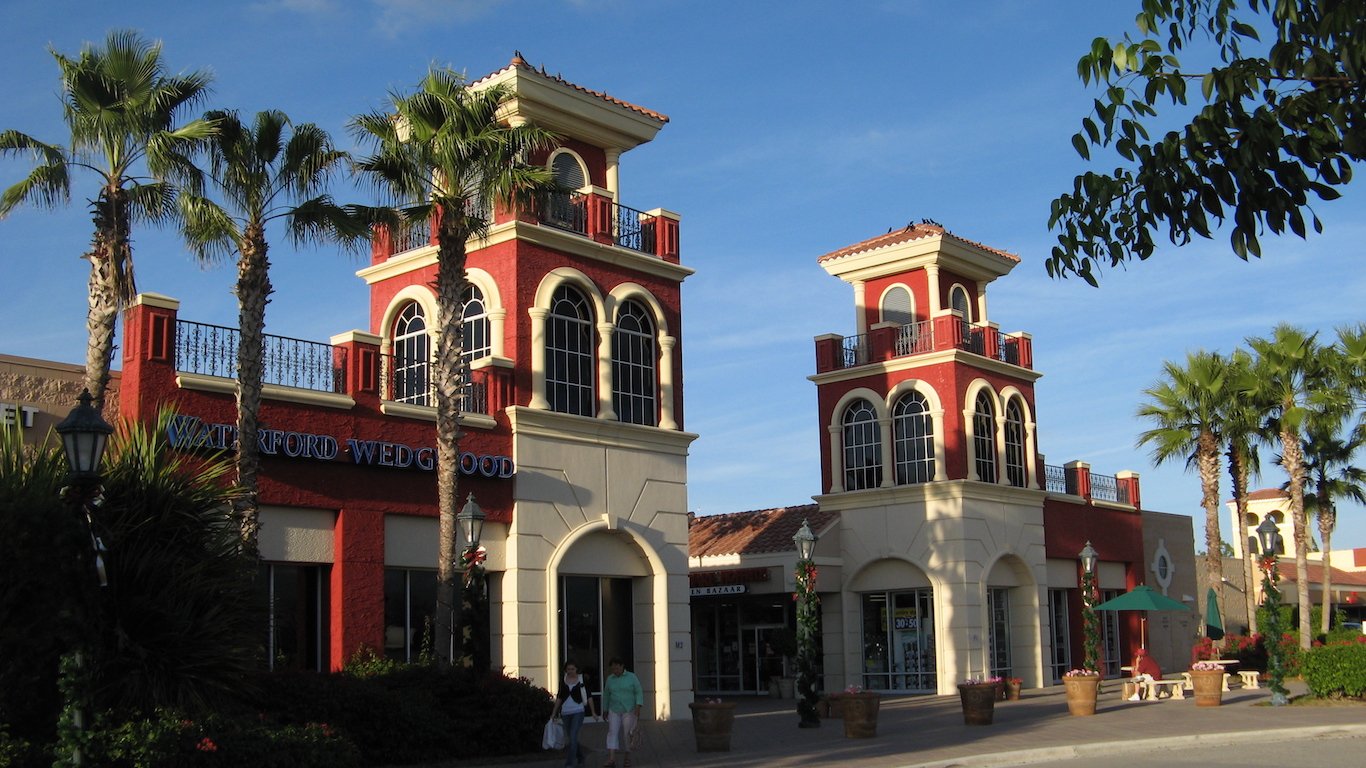
8. Estero, Florida
> Homeownership rate: 85.5%
> Median owner-occupied home value: $309,500
> Median household income: $72,999
> Median rooms per housing unit: 5.1 rooms
Estero, Florida, is one of just eight major cities in the United States in which more than 85% of occupied homes are owned by their residents. But unlike the rest of this list, Estero has a lot of vacant homes. Of the city’s 23,746 housing units, 38.7% sit vacant. It is important to note, however, that vacant homes are not considered when calculating the homeownership rate.

7. Mentor, Ohio
> Homeownership rate: 86.0%
> Median owner-occupied home value: $169,400
> Median household income: $70,625
> Median rooms per housing unit: 6.5 rooms
Generally, in the cities where the most homes are owned by their residents, the median home value is relatively high. This is not the case in Mentor, Ohio, where most homes sell for under $170,000, as compared to the U.S. median home value of $193,500. Mentor’s median home value, however, is still higher than the median home value across Ohio as a whole of $135,100.
[in-text-ad-2]
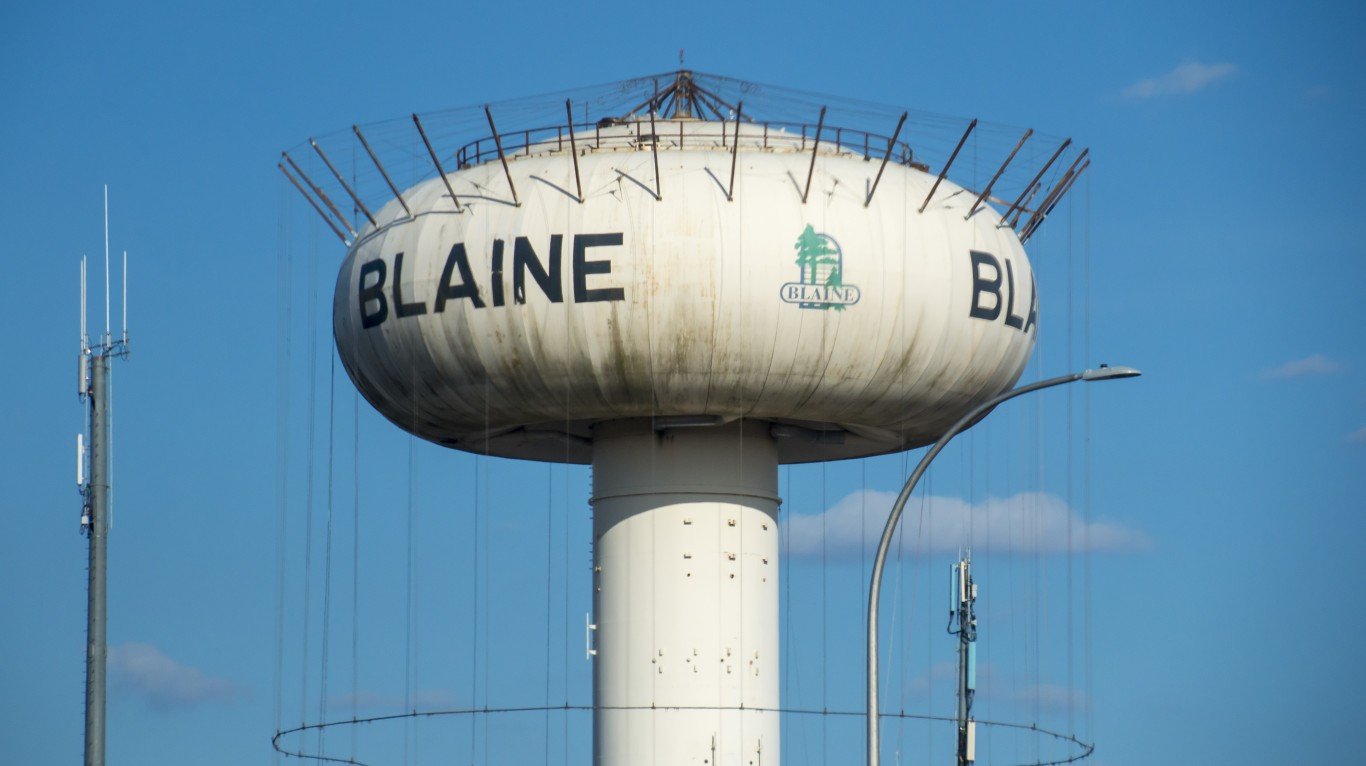
6. Blaine, Minnesota
> Homeownership rate: 86.1%
> Median owner-occupied home value: $202,000
> Median household income: $80,423
> Median rooms per housing unit: 6.5 rooms
Blaine, Minnesota, residents are among the most likely people in America to own the home they live in. The city seems to have a strong economy, with a median annual household income exceeding $80,000 and a poverty rate of 5.5%, both of which are highly favorable compared to national and state figures.

5. Sammamish, Washington
> Homeownership rate: 86.3%
> Median owner-occupied home value: $679,900
> Median household income: $157,271
> Median rooms per housing unit: 7.6 rooms
The median annual household income of Sammamish, Washington, of $157,271 is over $100,000 higher than the U.S. median. This is likely one of the reasons why Sammamish has a high homeownership rate of 86.3%, even though the value of homes in the area is much higher than the typical U.S. home.
[in-text-ad]

4. Flower Mound, Texas
> Homeownership rate: 86.9%
> Median owner-occupied home value: $312,000
> Median household income: $128,426
> Median rooms per housing unit: 7.9 rooms
Housing units in Flower Mound, Texas, are among the largest in the country, with a median of nearly eight rooms. This Dallas-area city has a median annual household income of $128,426, more than double the U.S. median of $57,562.
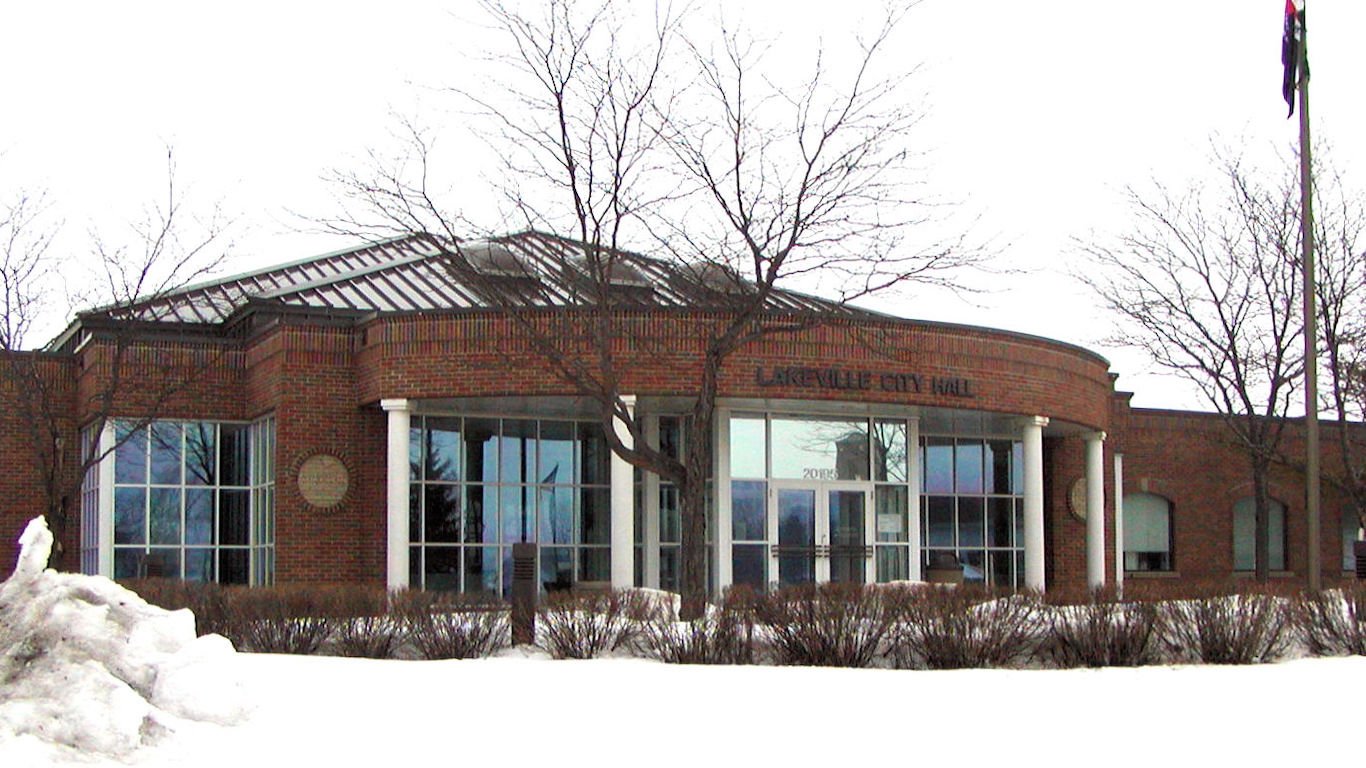
3. Lakeville, Minnesota
> Homeownership rate: 86.9%
> Median owner-occupied home value: $276,500
> Median household income: $102,943
> Median rooms per housing unit: 7.5 rooms
Just south of the Twin Cities, Lakeville, Minnesota, has a median annual household income of nearly $103,000, well above the state’s median of $65,699. Nearly 87% of Lakeville occupied homes are occupied by their owners, one of the highest homeownership rates in the country. Homes in this city tend to be larger and more expensive than American homes, with a $276,500 median value and a 7.5 room per home median. Nationwide, the typical home has a value of $193,500 and 5.5 rooms.
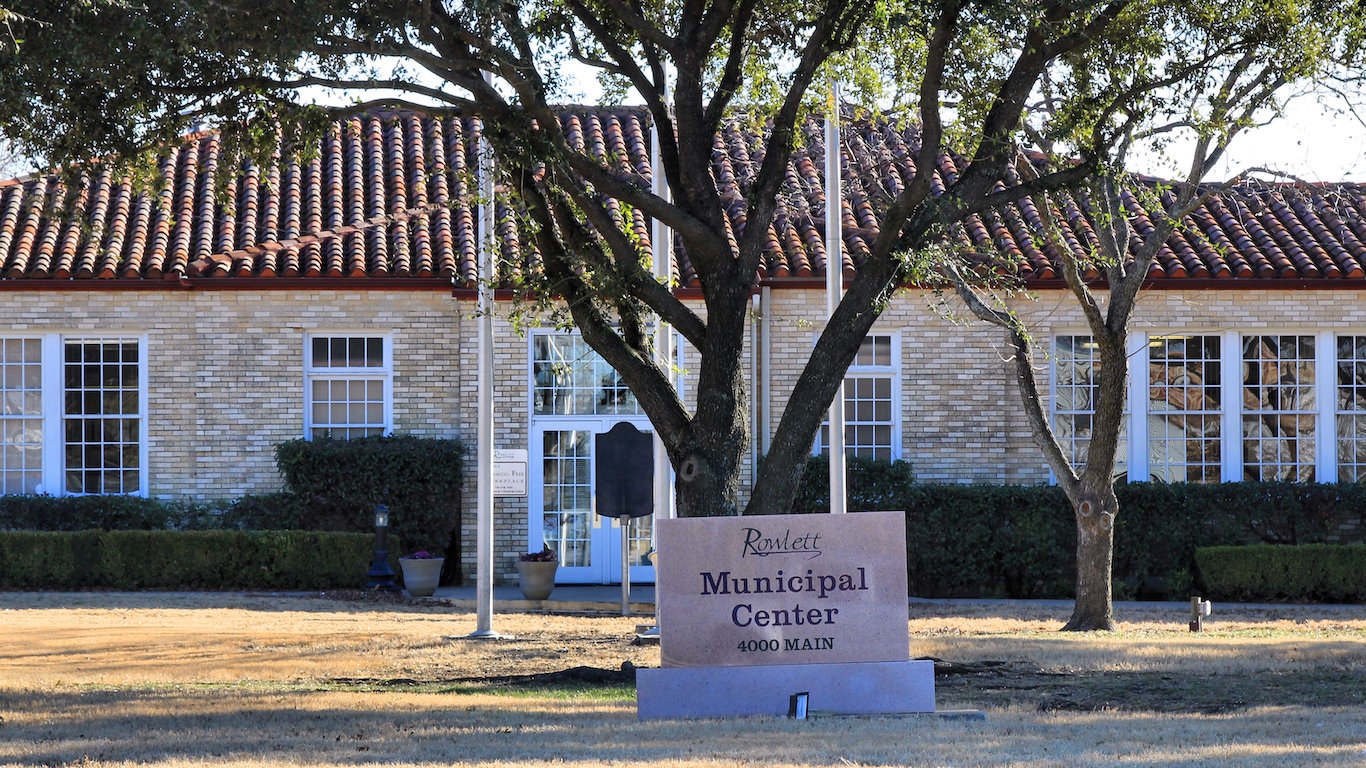
2. Rowlett, Texas
> Homeownership rate: 87.6%
> Median owner-occupied home value: $181,500
> Median household income: $90,391
> Median rooms per housing unit: 6.9 rooms
Residents of Rowlett, Texas, are much less likely to struggle financially than Texans as a whole. The city’s 6.7% poverty rate is well below the Texas poverty rate of 16.0%. Like many of the other cities on this list, Rowlett has very few new homes being built. Just 2.8% of Rowlett homes were built since 2010, but nearly 24% of homes in the city were built from 2000 to 2009.
[in-text-ad-2]

1. Orland Park, Illinois
> Homeownership rate: 89.2%
> Median household income: $85,802
> Median owner-occupied home value: $277,300
> Median rooms per housing unit: 6.6 rooms
Nearly 90% of all occupied homes in Orland Park, Illinois, are owned by their occupants, by far the highest homeownership rate in the country. Orland Park’s close proximity to Chicago allows residents access to the city’s numerous high-paying jobs. The median annual household income in the city of $85,802 is much higher than Illinois’ median of $61,229.
Methodology
To determine the cities where most people own their homes, 24/7 Wall St. reviewed data from the 2017 American Community Survey on the percentage of occupied housing units that are occupied by their owners by city. Vacant homes were not considered. Home values, household income, and the median number of rooms per housing unit also came from the ACS. Cities with 20,000 or fewer total housing units were not considered. Census designated places were also not considered.
Sponsored: Attention Savvy Investors: Speak to 3 Financial Experts – FREE
Ever wanted an extra set of eyes on an investment you’re considering? Now you can speak with up to 3 financial experts in your area for FREE. By simply
clicking here you can begin to match with financial professionals who can help guide you through the financial decisions you’re making. And the best part? The first conversation with them is free.
Click here to match with up to 3 financial pros who would be excited to help you make financial decisions.
Thank you for reading! Have some feedback for us?
Contact the 24/7 Wall St. editorial team.
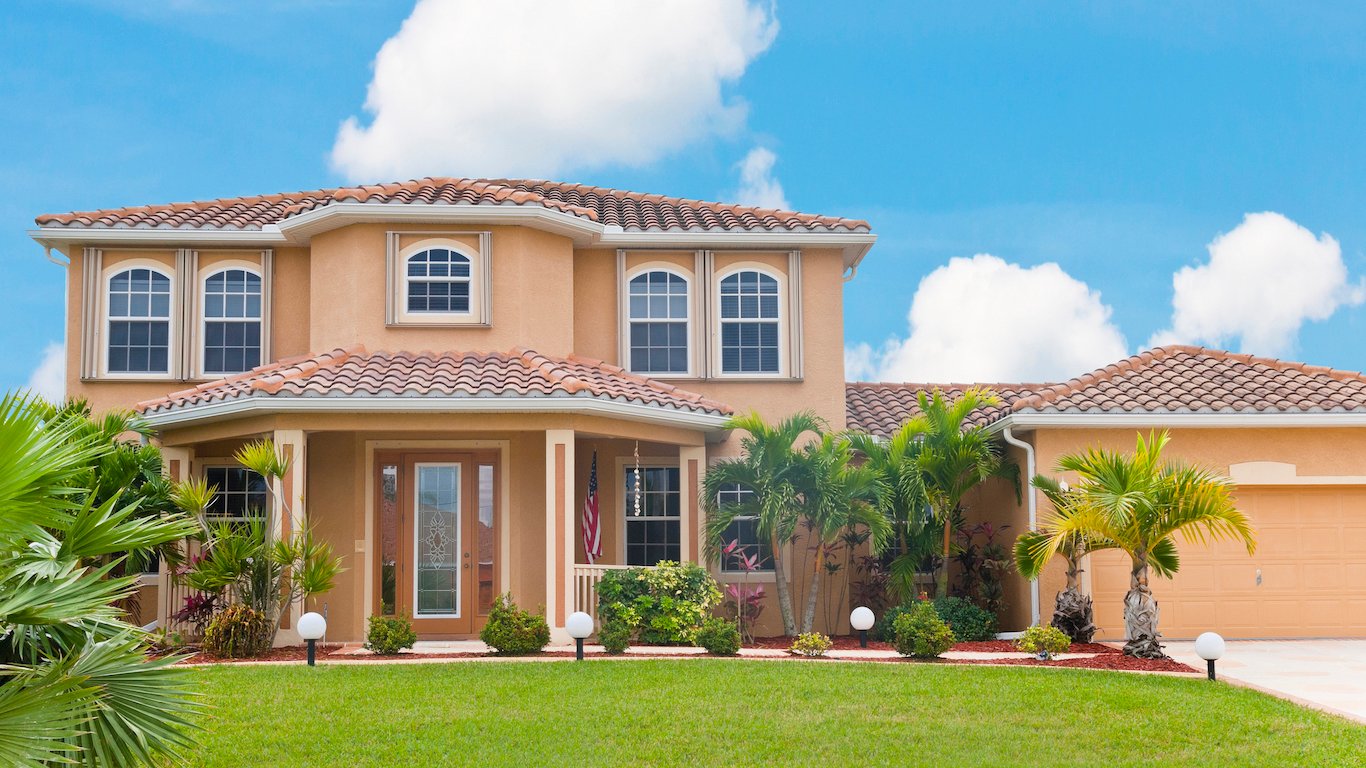 24/7 Wall St.
24/7 Wall St.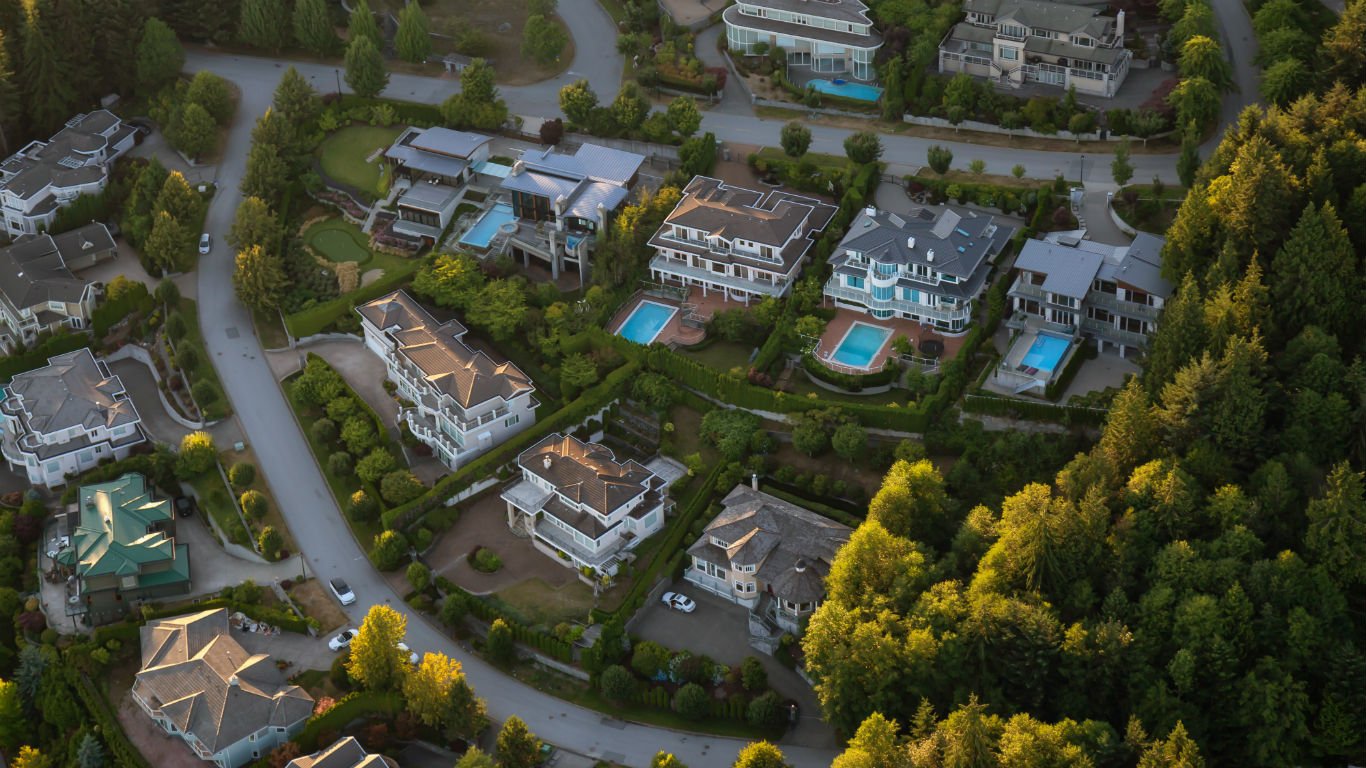 24/7 Wall St.
24/7 Wall St.
